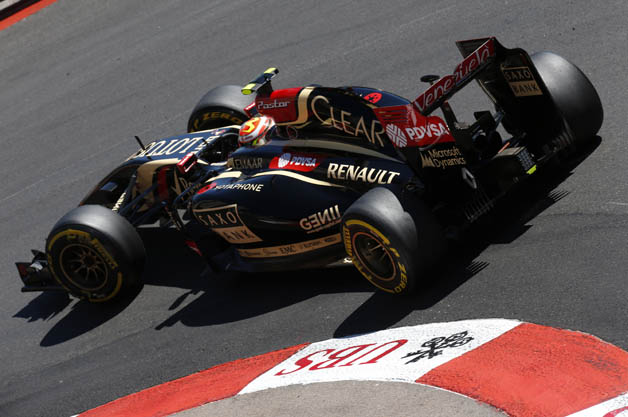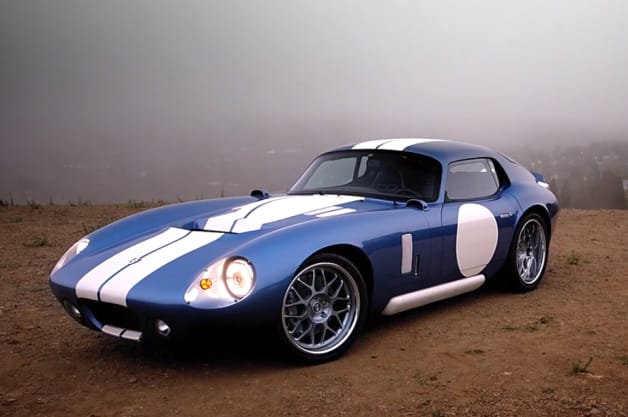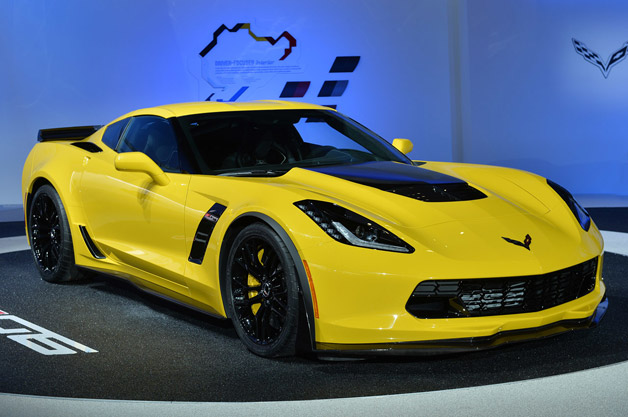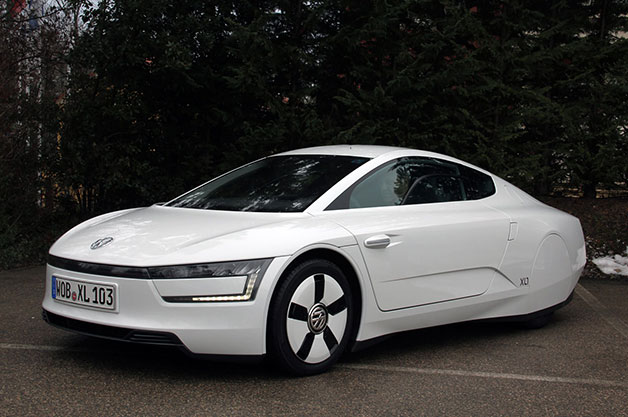The 2015 Chevrolet Corvette Z06 is the most powerful production car ever from General Motors, and it's a technological landmark in the long lineage of Corvettes. It's also more affordable than you might think.
As was announced earlier today, the 2015 Z06 has a starting price of $78,995 for the coupe and $83,995 for the convertible,
*including $995 in destination charges. That's not chump change, but
it's well below the price ranges of several of its key competitors.
The Corvette has long been compared with the Porsche 911, but the Z06's 650 horsepower and 650 pound-feet of torque easily eclipses the most powerful 911, the
(560 hp, 516 lb-ft). The Z06 also costs less than half as much, as the
Turbo S has a starting MSRP of $182,700, and then tacks on a
$995-shipping charge.
A closer comparison – pricewise – would be the Porsche Cayman GTS, which comes in with an MSRP of $75,200 – that's $2,800 cheaper than the Vette. Thing is, it has 310 fewer hp.
The Audi R8 is a slightly
more formidable competitor to the Z06 based on pure power. The V10 Plus
has 550 hp, and its mid-engine configuration is a better layout for
pure driving dynamics. But, its pricing starts at $173,500, not
including a $1,250-destination charge. The base R8 with its 430-hp V8
begins at $115,000.




Then there's another long-running Corvette rival, the Dodge Viper SRT,
and its 640-hp V10 engine. For 2014, the Viper costs $99,885, which is
up $2,000 from 2013. Add in $1,995 shipping (your Viper does come in an
enclosed trailer), and the total comes to $101,880. The price listed on
the SRT website is $102,485, which includes the gas-guzzler tax, but not
shipping. Regardless, it's about $22,000 more than the new Z06.
The all-wheel-drive Nissan GT-R, meanwhile, dials up 545 hp from a turbo V6 for $101,770, which rises to $103,365 with shipping.
The Z06 also grades out well in the world of exotics. The Ferrari FF
produces 651 hp from its V12, which edges out the Z06 (barely), though
the Ferrari only makes 504 lb-ft – all for a sticker of about $300,000 –
though it does offer all-wheel drive.
Flipping the script on the Z06, the 2015 Dodge Challenger SRT Hellcat
pumps out 707 horses for a price tag of $59,995 and a $995 destination
charge brings the sticker to $60,990. That's more power for less money
than the Corvette, but the Challenger is also a much larger car, and
it's more of a muscle car than a sports car.
In this age of gaudy horsepower figures and prices, the Hellcat vs. Z06
is a fitting example of how modern sports cars are not all created
equal. While the Hellcat can blow the doors off of the Vette with its
power specs, the Z06 is assuredly a better track car. Porsche and Ferrari
loyalists will naturally gravitate to and pay more for products from
their brands, and no horsepower figure or "low-low" sticker price will
change that. Plus, the sports-car segment is small enough in terms of
sales so as to seemingly play by its own rules. No matter how much
horsepower the Corvette has, it won't do much to erode GM's Corporate
Average Fuel Economy standing.
While the Hellcat can blow the doors off of the Vette with its statistics, the Z06 is assuredly a better track car.
Still, the Z06 creates a seriously compelling value case for enthusiasts
in search of power for a competitive price. Corvette spokesman Monte
Doran reminded
Autoblog that sharing parts and technology among
Chevy vehicles has allowed the brand to keep prices of its high-end
sports cars relatively low. The 2015 Chevy Corvette Z06 is the first Z06
to use a supercharged engine, the first to have a true convertible
variant and the first to offer an eight-speed automatic transmission.
"Chevrolet has developed a successful model for sharing components with
Corvette and other models in the portfolio," he said. "For example, the
eight-speed transmission was designed for Z06, and will also be used in
full-size trucks with the 6.2L; the carbon-ceramic brakes are shared
between the Camaro Z/28 and Corvette Z06. This enables Chevrolet to offer stratospheric-levels of performance without stratospheric prices."
Dave Sullivan, manager of product analysis for AutoPacific, an automotive research firm, concurs:
"By sharing parts and components with higher-volume vehicles, GM can
keep the price down on the Corvette," he said. "The Z06 could prove to
be one of the memorable bargains of the century."
Sullivan expects the horsepower wars to continue, which is only good for enthusiasts.
"Look at the Ford GT a
decade ago," he said. "It was about $150,000 for 550 HP and 0-60 in 3.7
seconds. For a little more than half that, you can get more power,
better performance, and a car that the manufacturer is committed to
building for many years to come. Inflation? What inflation?"



